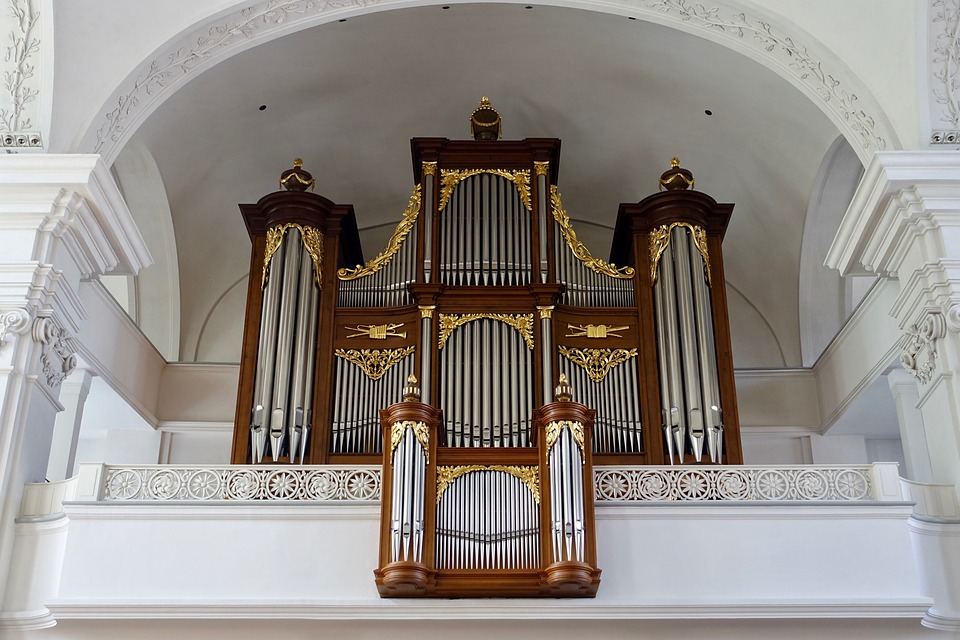How do pipe organs work?
by Ailsa Harvey · 21/12/2019
Ancient technology that uses a complex system of pipes and valves to make music

The sound of an organ is made by the column of vibrating air inside each pipe, and the instruments have four crucial parts: pipes, a chamber, mechanical pressure, and a keyboard. Amazingly, the first one was invented in ancient Egypt by a Greek engineer around 300 BCE.
The challenge at the time was to find a way to make multiple wind instruments play simultaneously
without the need for a whole orchestra of people. So the engineer constructed an air-filled chamber
that could be pressurised using pumps and water, with a series of keys and valves that allowed the air to rush through different instruments at different times. It was called the hydraulis, and it spread across the ancient world.
The Romans later swapped the pumps for bellows, and in medieval times even more developments
were made, including portable organs with bellows played by one hand and the introduction of church organs to play music for the community. By the Renaissance these enormous instruments had started to introduce stop controls, allowing multiple sets of pipes to be played at once, creating rich, multi-layered sounds.
Modern pipe organs are based on the same principles and the sounds they produce are varied by changing the design of the pipes themselves. Narrow and straight pipes have more harmonics than wide and tapered pipes, while metal pipes with a high tin content make a brighter sound than wooden pipes. Flue pipes sound more like a flute or recorder, while reed pipes have a mechanical clarinet-like reed at the base.
This article was originally published in How It Works issue 103, written by Laura Mears
For more science and technology articles, pick up the latest copy of How It Works from all good retailers or from our website now. If you have a tablet or smartphone, you can also download the digital version onto your iOS or Android device. To make sure you never miss an issue of How It Works magazine, subscribe today!




